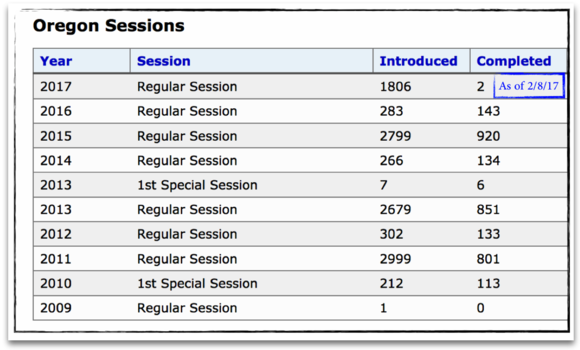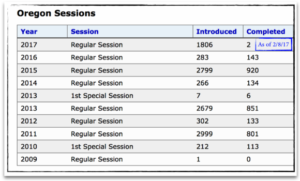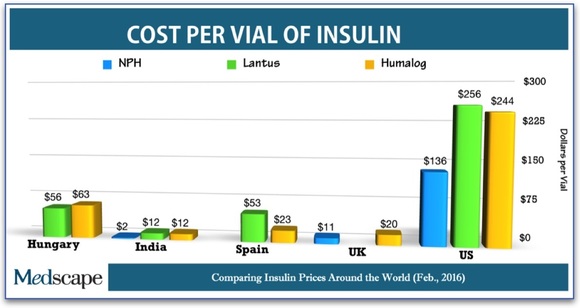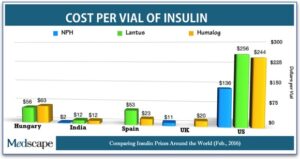Oregon State Legislature sent this bulletin Wednesday, March 21, 2018 by devadmin
As I travel, meet and talk with my constituents in Senate District 28 several items always come to the top of our discussion lists. Most people express continued concern for a standard litany of issues: the degradation of our traditional American culture; the need for fewer regulations and obstacles for business; freer markets with fewer tariffs; and a return to our American constitutional roots.
Stop and think for a minute. People want more freedom, smaller government, lower taxes and yet every year the legislature meets and passes hundreds of new laws. Why do we need all of these laws? An Ancient Roman Senator and historian, Tacitus, made the claim, “The more numerous the laws, the more corrupt the state.”
I think he understood humanity’s fallen nature correctly.
The 2018 legislative “short-session” scuttled perfectly legitimate efforts aimed at reigning in Oregon’s governmental enterprise. Bipartisanship became the media watchword while the Democratic leadership silently pursued their own progressive political agenda. For those of us in South, Central and Eastern Oregon, this is just a glimpse of what will happen in 2019 if there are no substantial changes in Oregon’s House, Senate or Executive offices.
This well-orchestrated short session circumvented attempts at meaningful change. It also sandbagged citizens by limiting their participation in condensed committee schedules. Therefore, substantial policy issues were forced through without transparency or the time necessary to pursue alternative solutions. Despite these challenges, I and my Senate Republican colleagues effectively stopped numerous hyper-partisan, tax and spend boondoggles from becoming law in 2018.
In particular, two bills which I adamantly opposed were HB 4001 and SB 1507. These two Cap and Trade bills were only used for political posturing and represent the worst of the Democrat’s agenda. They both have insurmountable problems. First, they would burden taxpayers with a minimum of $700 million dollars in extra taxes, annually. Second, neither would make a discernible difference in global greenhouse gas emissions.
Additionally, without any Republican support, the Democrat majority passed SB 1528, which will create a whopping 30% tax increase on Oregon’s sole proprietors, small and family owned businesses and LLC’s. This partisan tax scheme will force 192,000 small businesses to pay $258 million in 2018 taxes while protecting large multinational corporations who are able to game the system.

Another bill which I supported, HB 4016, never made it out of committee. Environmental groups and tribal interests spoke against this straight-forward and common-sense fix for the Klamath Irrigation District (KID). This bill would have allowed temporary transfers within the KID district boundaries to other land within their boundary. In KID these place of use changes would have allowed the district to remedy original mapping and boundary errors without exceeding the water right in the original claim.
As I have written in the past, I was a Chief Sponsor of HB 4005 which passed. This bill is intended to help grapple with the high costs of prescription drugs and the harm that patients and consumers experience by exposing the details behind cost increases for pharmaceutical products. This bill only requires reporting for drugs costing more than $100 per month that increase by more than 10% on an annual basis.
I sponsored HB 4100 which also passed. This bill enforces property rights for facilities that provide equine therapy or counseling activities in areas zoned for exclusive farm use (EFU). This will allow specific therapeutic service providers to continue utilizing our abundant natural resources, domesticated livestock and nonclinical rural environments for creating healthy, wholesome and meaningful interactions for their clients.
Another common-sense bill which I sponsored was HB 4008. It passed, making calculations of projected future earnings based on race or ethnicity of a plaintiff inadmissible. Since, we believe that all people carry enormous potential and are each endowed by our creator with certain inalienable rights, it seems only logical that any civil calculations for projected future earnings reflect those beliefs.
I sponsored and supported HB 4036, which passed. This bill allows home-schooled and public charter school students to participate in various types of interscholastic activities, including sports, band, choir and technical education programs. School Districts can determine the costs and may charge participating students within limits set by the bill.
My deep appreciation for the lessons of history and the dangers of unconstrained government, will continue to inform my perspective. Only a constitutionally limited government can enable its citizens to reach their fullest potential by defending them against the bureaucracies’ perpetual tendency toward fiscal irresponsibility.
Oregon’s unrelenting drift toward collectivism will eventually swallow us, our families and our businesses without liberty-minded citizen’s and leaders standing up for our individual freedom. Legislators need to be constantly reminded of the ancient words from Tacitus, “The more corrupt the state, the more numerous the laws.”
Best Regards,

Dennis Linthicum
Oregon State Senate 28



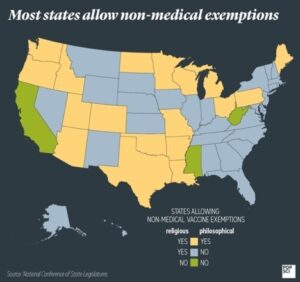

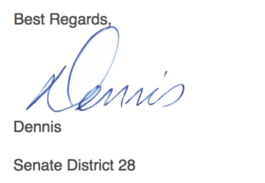













 The Public Utility Commission exits, first, to “protect the customers from unjust and unreasonable extractions by establishing fair and reasonable rates.” (cf. ORS 756). This standard is established by definition, “Rates are fair and reasonable for the purposes of this subsection if the rates provide adequate revenue both for operating expenses of the public utility or telecommunications utility and for capital costs of the utility, with a return to the equity holder.”
The Public Utility Commission exits, first, to “protect the customers from unjust and unreasonable extractions by establishing fair and reasonable rates.” (cf. ORS 756). This standard is established by definition, “Rates are fair and reasonable for the purposes of this subsection if the rates provide adequate revenue both for operating expenses of the public utility or telecommunications utility and for capital costs of the utility, with a return to the equity holder.”
